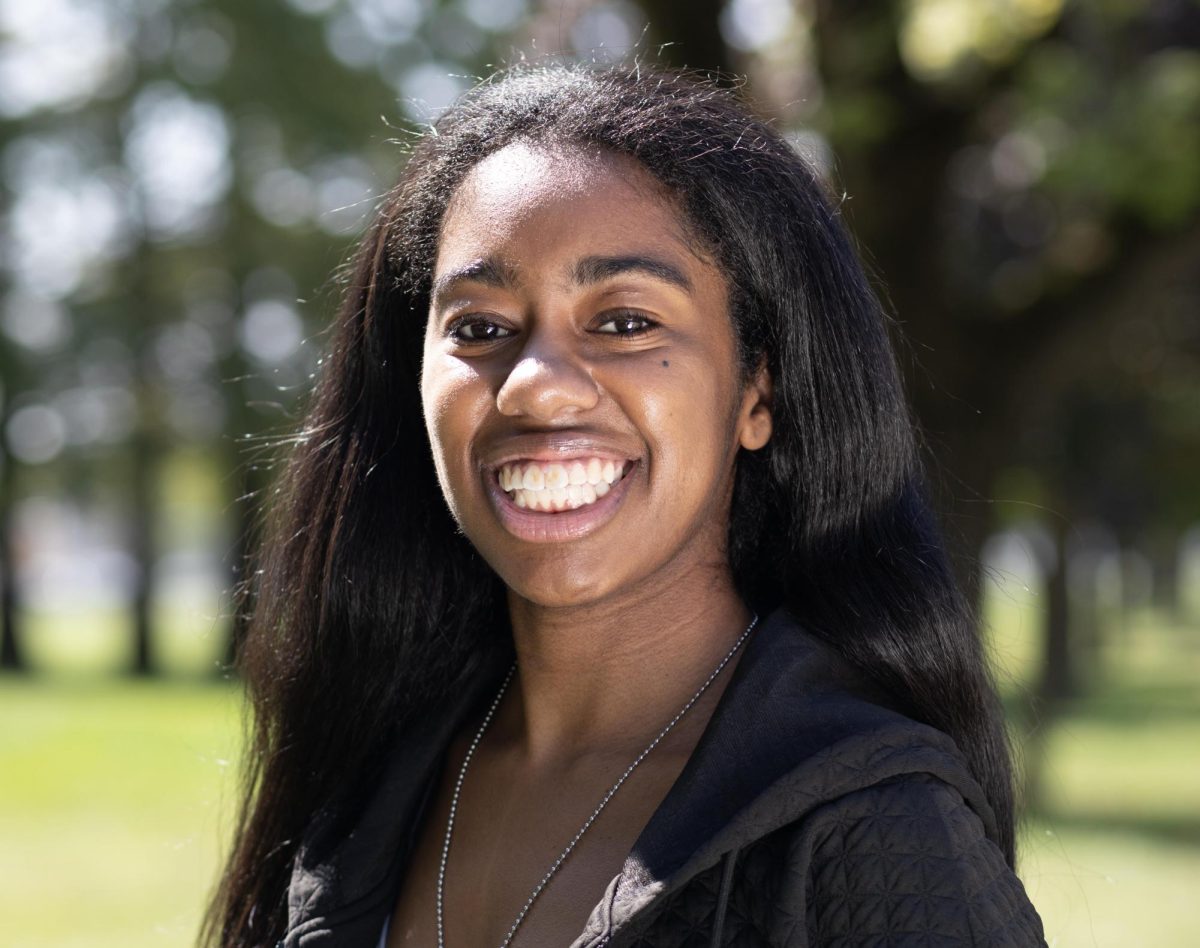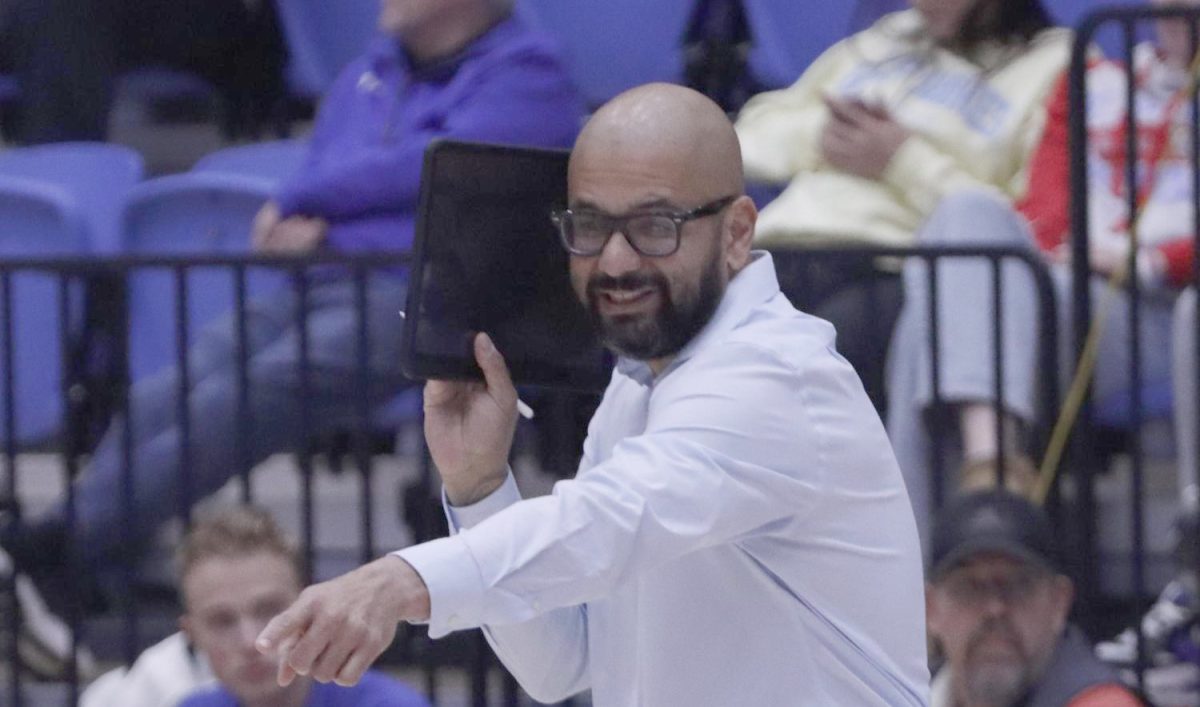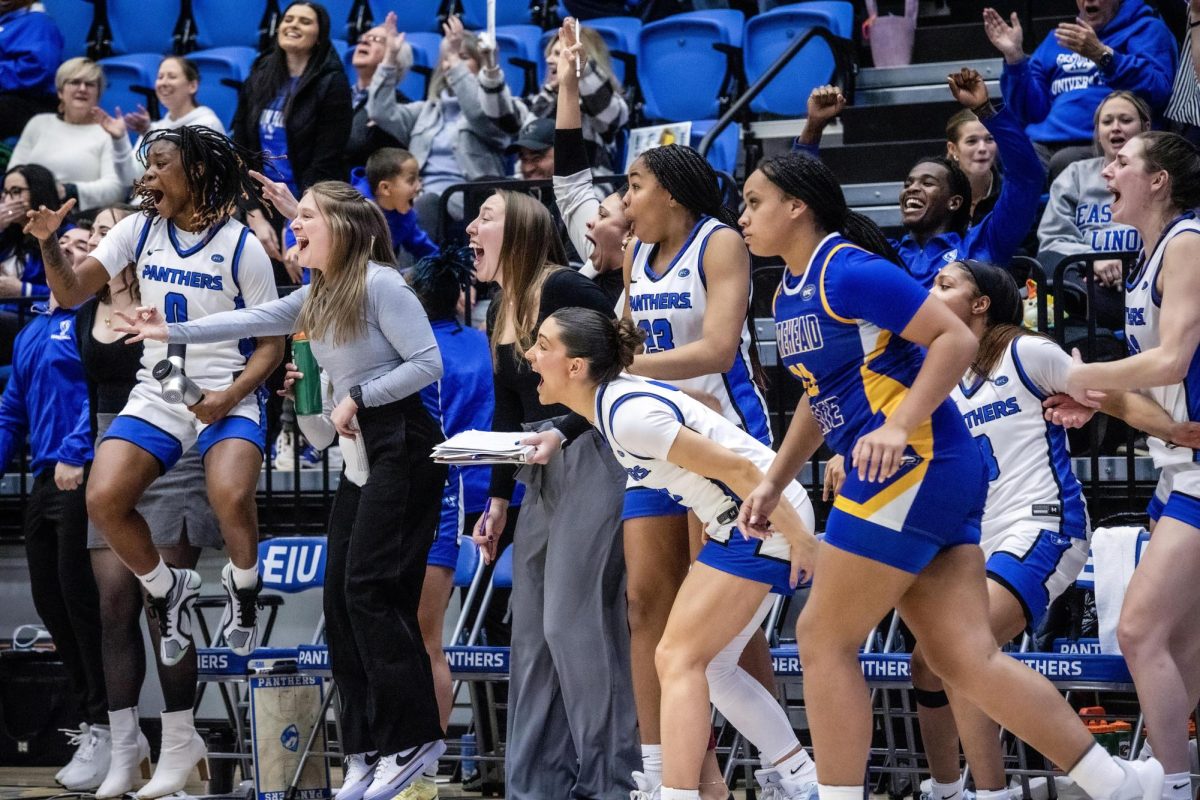Charleston saw around a 99% solar eclipse today, but many people travelled south to experience totality. Here are reports from around the state.
Carbondale
The eclipse celebrations have officially ended in Carbondale, one of the major hotspots for the total solar eclipse.
Carbondale has been in the direct path of totality for both the August 2017 and April 2024 solar eclipses. Its residents and the thousands of people who visited have officially seen a once, or twice, in a lifetime experience.
“That was the coolest thing I have ever seen in my life,” said Chantel Morrigan, who was moved to tears during totality.
Those who traveled to Carbondale saw four minutes and nine seconds of totality. Its college, Southern Illinois University Carbondale, hosted the Crossroads Eclipse Festival partnered with NASA EDGE and the Adler Planetarium.
Several people were doing solar eclipse activities at the festival including racing solar powered cars, listening to talks from NASA scientists, getting free eclipse glasses and taking photos in front of diagrams.
The official solar eclipse viewing was at the SIUC stadium. The stadium had its seventh biggest astronomy event and was also open for grass seating outside. NASA provided footage of the eclipse moving in real time as well.
The festival hosted several vendors to sell their products. Larry and Debbie Drake were invited to sell their handmade jewelry from Nashville, Tennessee. They got a decent number of sales from this event, said Debbie Drake.
Some volunteers even drove for several hours to help with the event including Jennifer McKercher, who drove 10 hours from Solon Springs, Wisconsin.
“I would do this again in a heartbeat,” said McKercher.
Lawrenceville
The small, local airport between Lawrenceville and Vincennes, Indiana hosted a special event for the total solar eclipse on April 8.
The Mid-American Air Center is normally used for farming planes, but today it hosted more than 1,000 people to enjoy live music, food trucks, family games, a beer tent and more, said Ginger Shick, a Lawrence County Chamber of Commerce event coordinator.
This area had one of the longest times in totality, with a total viewing time of four minutes and five seconds.
Dancing in the Dark lasted from April 7 at noon to April 9 at noon.
The event also hosted fly-in, drive-in and camping opportunities, with an estimated 1,500 attendants.
The workers parked around 200 cars, and over 70 planes flew in from all across,the United States, said Lawrenceville Chamber of Commerce event coordinator Grant McDonald.
“We have anywhere from single engines to planes to big private jets and even a helicopter here,” said Shick. “One jet was even confirmed to cost $4,000,000, and another flew in from San Francisco.”
Knox County Fire Captain Aaron Stolting said the turnout was slightly smaller than they planned, but the city prepared for anything.
“So far today, we have seen several visitors from out of town. The campground is full, and there are even some campers in the Walmart parking lot,” Stolting said.
Multiple families from all over the state decided to come to the event for the family activities that were advertised. Many small business owners were present at the event with merchandise tables. Most products were either eclipse or Vincennes/Lawrenceville themed.
While this was one of the biggest events, there were other events going on throughout Vincennes and Lawrenceville.
The crowd sizes were a little disappointing, said the mayor of Vincennes, Jo Yochum, but the local citizens did a great job at showing up and helping with the activities going on around town.
Martinsville
Around 400 residents and guests of Martinsville used the eclipse as an opportunity to make connections.
Several science-centered organizations, including the University of Illinois astronomical society, the Illinois space society and the outdoor adventure society visited Martinsville Monday morning for the eclipse, said the president of University of Illinois Urbana-Champaign astronomical society, Yash Ejjagiri.
UIUC supplied the organization with $2,000 in funding to attend the event with demonstrations, eclipse glasses and vehicles, said treasurer Lisa Leung.
Between 130 and 140 people from the university attended the event, Ejjagiri said.
The UIAS brought demonstrations with them to the fairgrounds in hopes to educate viewers on not only the total solar eclipse but other space phenomenon’s, Ejjagiri said. These demonstrations ranged from models of the moon’s surface to a 128-year-old telescope.
The UIAS was on a time crunch to finish their models before the University of Illinois engineering open house on Friday and Saturday, where students could display the demonstrations. In order to complete the models, members worked until 2 or 3 on Friday morning, Ejjagiri said.
The ensemble of demonstrations won the outstanding freshman exhibit award during the open house. This was the society’s first win in seven years.
In 2017, the organization placed third for outstanding registered student organization, Ejjagiri said. But during the pandemic, the organization crumbled and had to be rebuilt from scratch, he said.
“Now, we’re better than ever,” he said.
Students like Allen Chang and Lisa Wang attended Martinsville’s viewing party in hopes it would be less crowded.
The pair drove an hour and a half to view the eclipse, Wang said.
“It’s just exciting because it’s rare,” Chang said.
Martinsville students Amanda Hammond, Camryn Remlinger, Landry Price and Finn Pleij worked concessions alongside their families for the day.
“I feel like it was a really good idea to have it today because we got a lot more people than we would have any other time,” Hammond said.
Hannah Hayes, Elsie Svika and Olivia Bennett contributed to this article.
The News Staff can be reached 581-2812 or dennewsdesk@gmail.com.








![[thumbnail edition] Assistant Coach of the Linebackers, Rodman Noel talking to the linebackers about their positions at O'Brien Field on the Eastern Illinois University campus, Charleston Ill.](https://www.dailyeasternnews.com/wp-content/uploads/2025/04/FB_24_O-1-e1744671213207-1200x609.jpg)





![[Thumbnail Edition] Charleston High School sophomore Railyn Cox pitches the ball during Charleston's 8-7 win over Flora High School on Monday, March 31.](https://www.dailyeasternnews.com/wp-content/uploads/2025/04/SBHS_01_O-1-e1743982413843-1200x1023.jpg)


![[Thumbnail Edition] Senior Foward Macy McGlone, getsw the ball and gets the point during the first half of the game aginst Western Illinois University,, Eastern Illinois University Lost to Western Illinois University Thursday March 6 20205, 78-75 EIU lost making it the end of their season](https://www.dailyeasternnews.com/wp-content/uploads/2025/03/WBB_OVC_03_O-1-e1743361637111-1200x614.jpg)












![[THUMBNAIL EDITION] (From left to right) Head football coach Chris Wilkerson works with his son student assistant coach Peyton Wilkerson at football practice at O'Brien Field on the Eastern Illinois University campus on Thursday.](https://www.dailyeasternnews.com/wp-content/uploads/2025/04/FB_25_O-1-e1744234837107-1200x596.jpg)











































